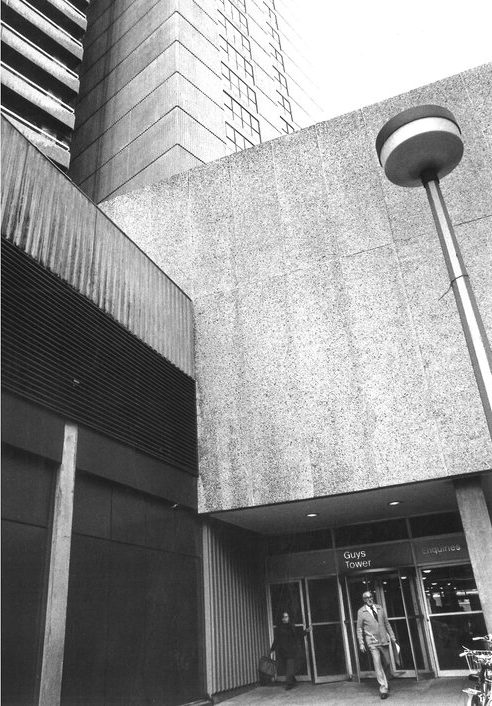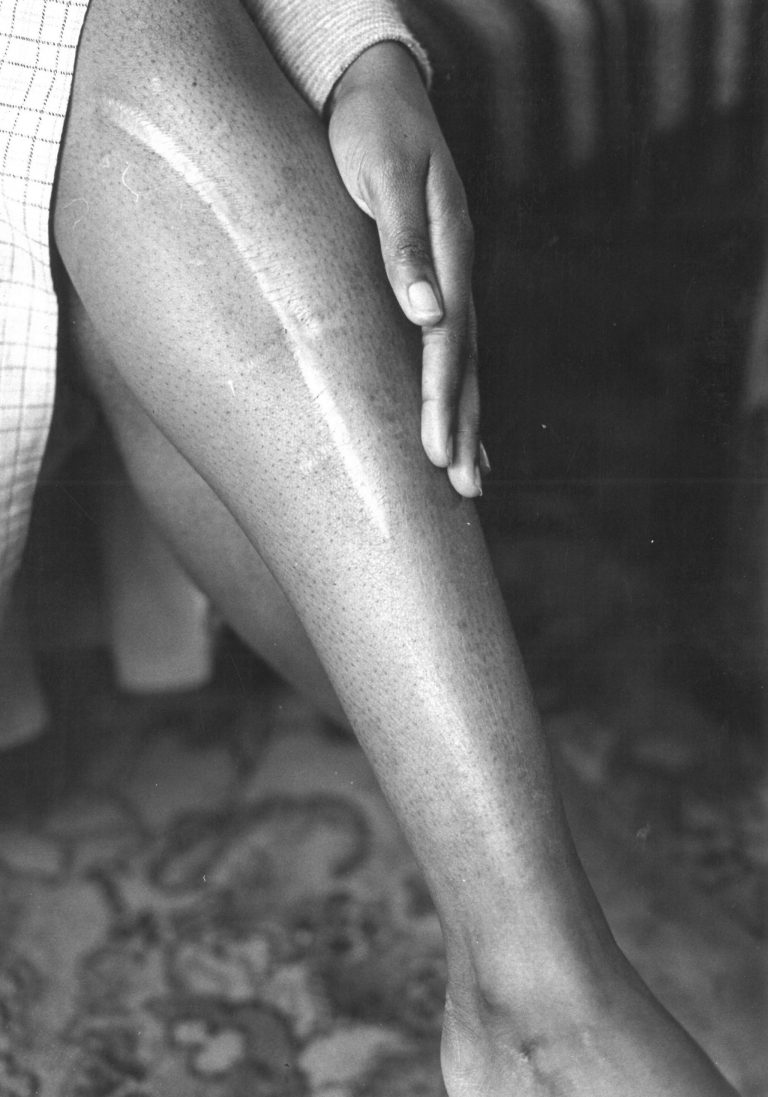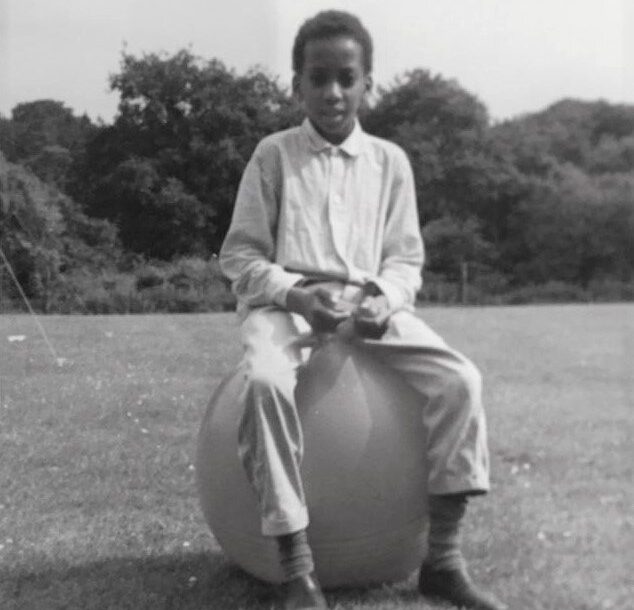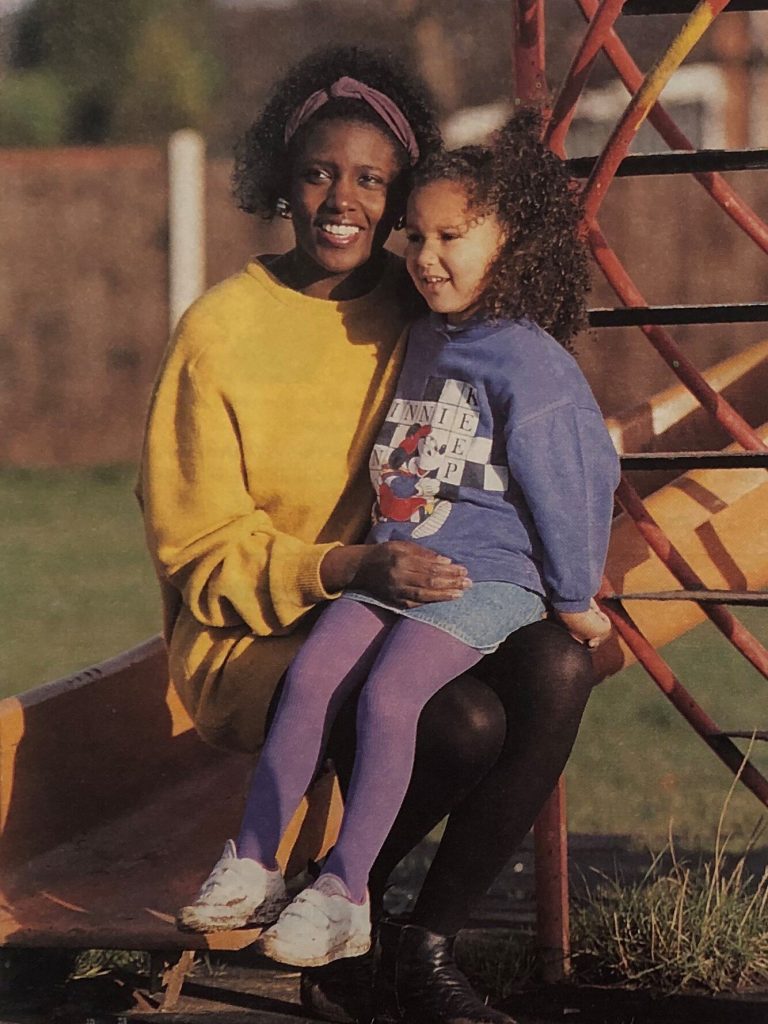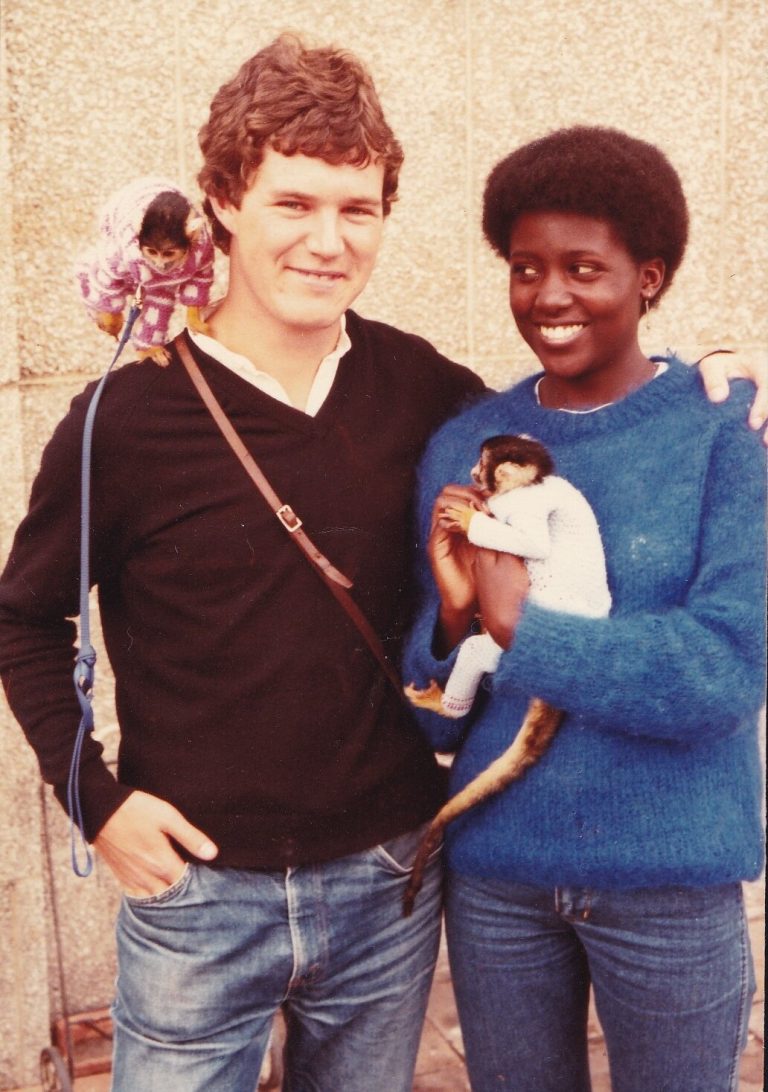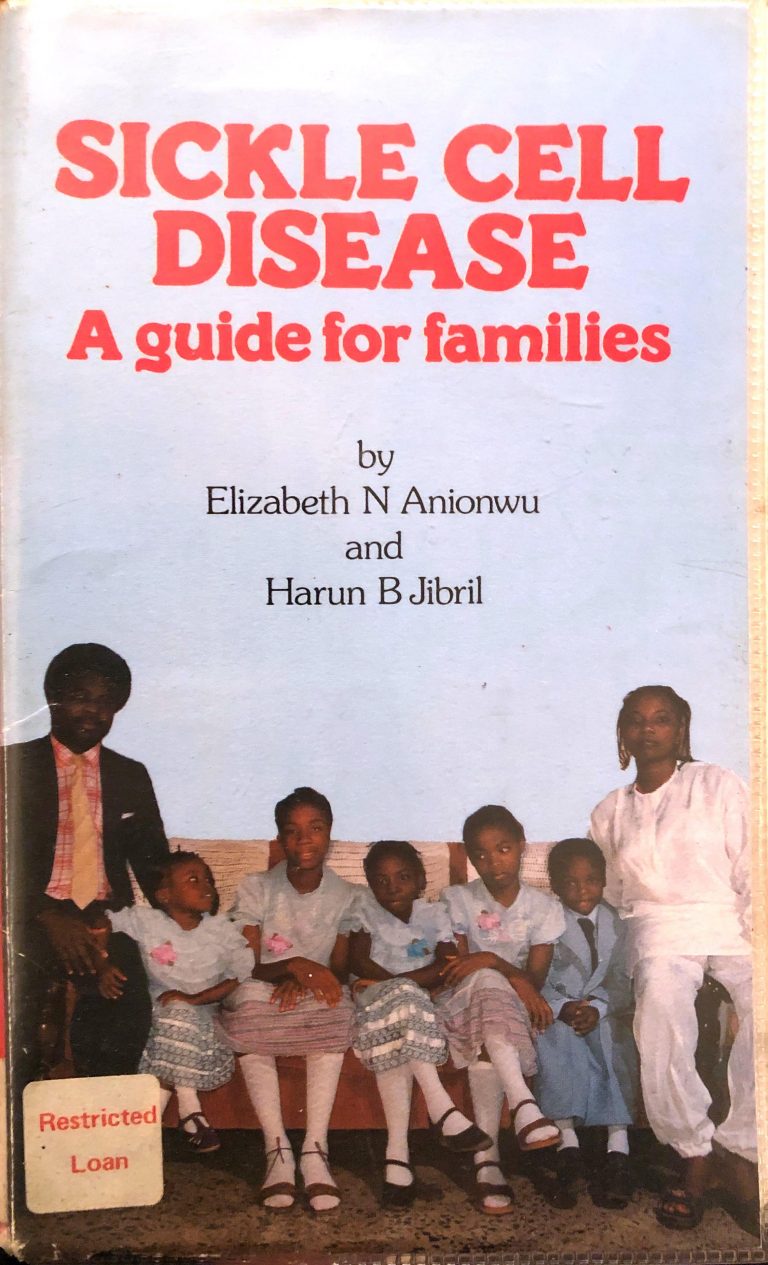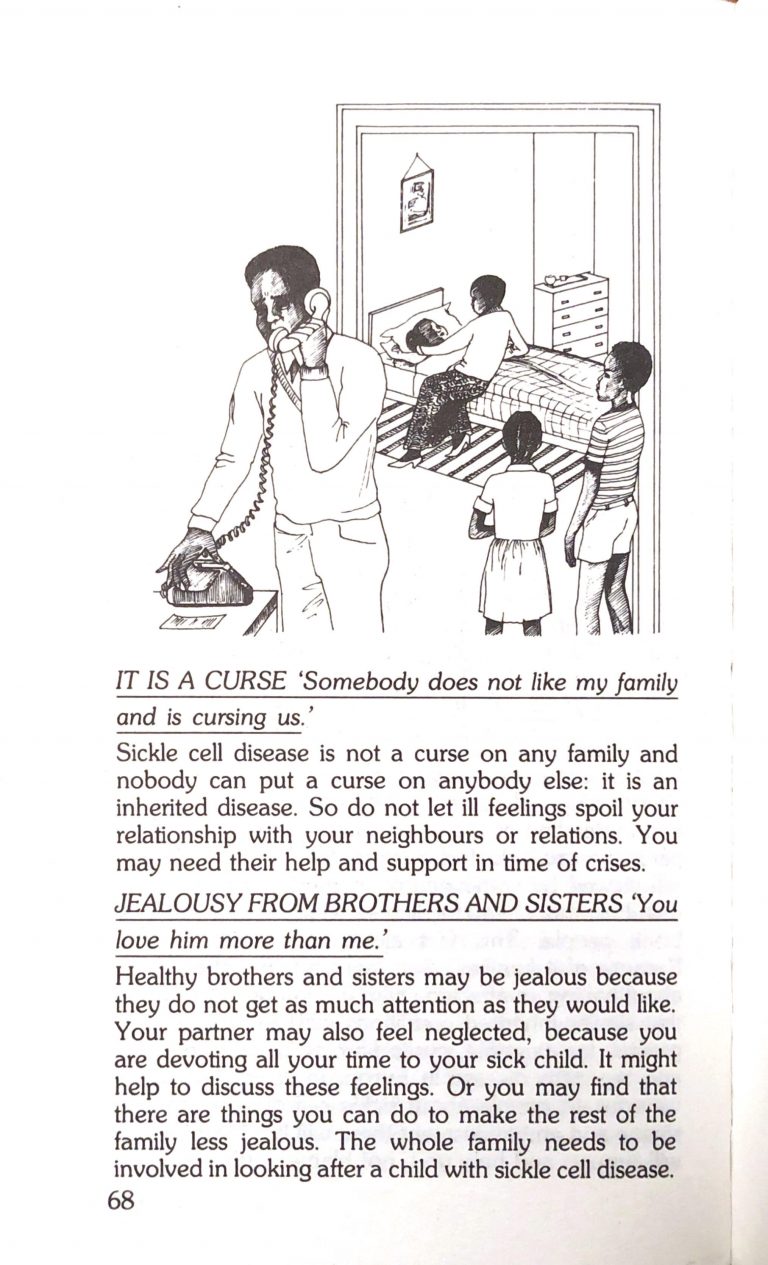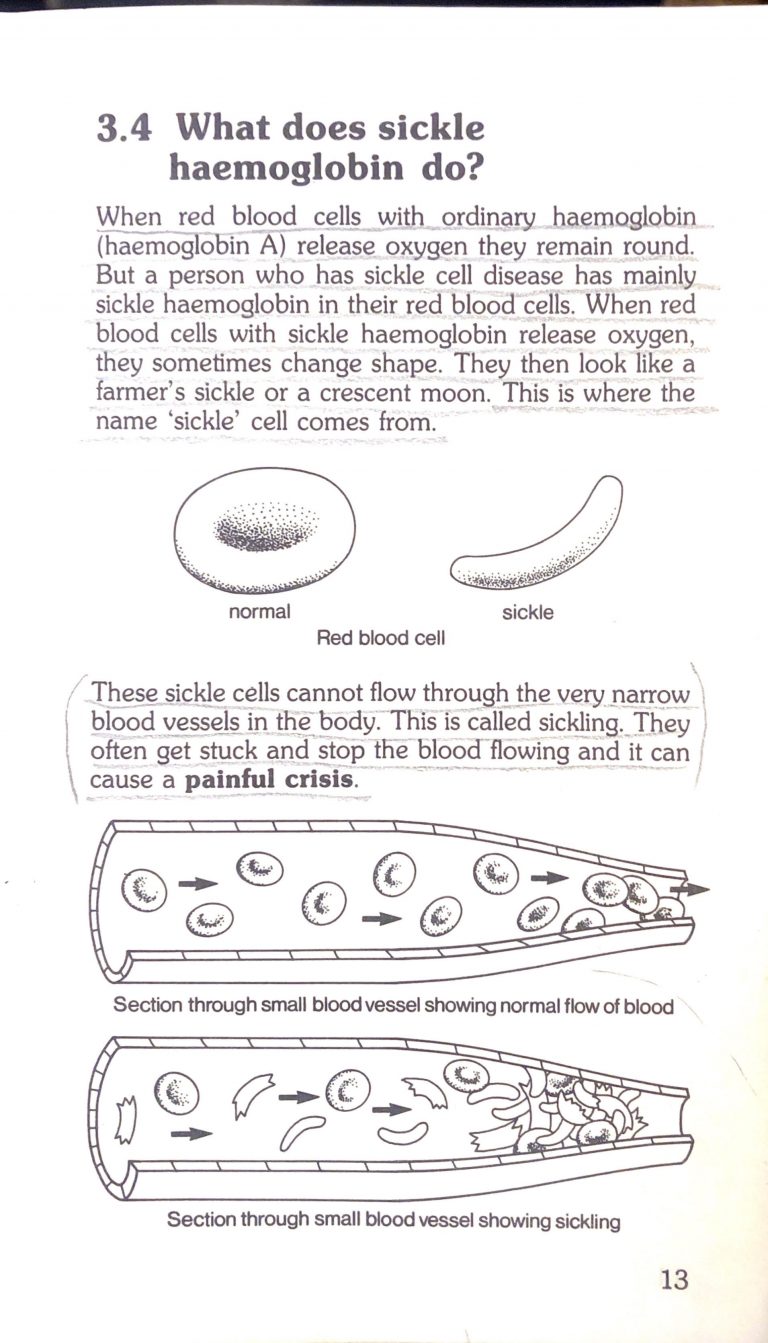Living with Sickle Cell
‘I want to be viewed as someone who lived her life in the best way that she could – I could find meaning in this adversity I was born with ’ June Okochi
Sickle cell disease is an invisible genetic condition that affects no two people in the same way. Some with the disease deal with lifelong pain and complications, others are unaffected. How do people with sickle cell disease navigate life, work and the National Health Service? How can they communicate the pain of an invisible illness to doctors, colleagues and family? In this section, explore archives and photographs depicting life with the condition, and listen to oral histories of people talking about what sickle cell crises feel like, how they manage work, how they want to be seen, and how they keep going.
These photographs are from a 1985 photography project about living with sickle cell disease, taken by Andrew Pothecary.
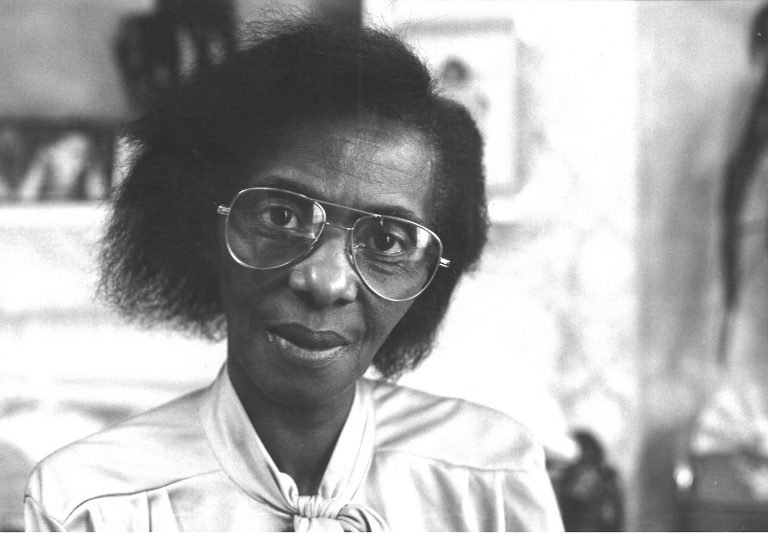
“We've lived with this condition for our whole lives – we know what works for us”
Jenica Leah (born in 1989 in Birmingham) is a youth mentor and speaker. Here she explains what a sickle cell crisis feels like for her, and what she feels the main barriers to equal healthcare are for people living with sickle cell disease.
“There are microaggressions that you pick up on, but you rationalise it away”
Ajay Dattani is an actor, youth worker and Chief Executive of the Organisation for Sickle Cell Anaemia Relief (OSCAR) Birmingham. He has Sickle Cell-Thalassaemia andis of Jamaican and Indian heritage. Here, he discusses his experiences of racial profiling in the health service.
‘You can't breathe, every part of your body is in pain’
Basil Nigel Bramble worked in printing for forty years, and is now retired. Here he is pictured aged ten, convalescing at a Children’s Hospital in Banstead, Surrey in 1968. Click to hear Basil talking about what a sickle cell crisis feels like for him.
“She's always just wanted to live her life”
Carol Patching was born in 1961 in Bradford, and is pictured here with her daughter in 1991.
Click the audio to hear her husband, Richard Patching, talk about Carol, her diagnosis, and her approach to life.
‘I know what I want to achieve’
June Okochi was born in London in 1982, and grew up in Nigeria. She is an NHS worker, a sickle cell patient representative and mentor, and a photographer. Click the audio to hear her thoughts on her identity and how she wants the world to see her.
Miai Phillip participated to our filmmaking masterclass. Watch Miai talking about living with SCD.
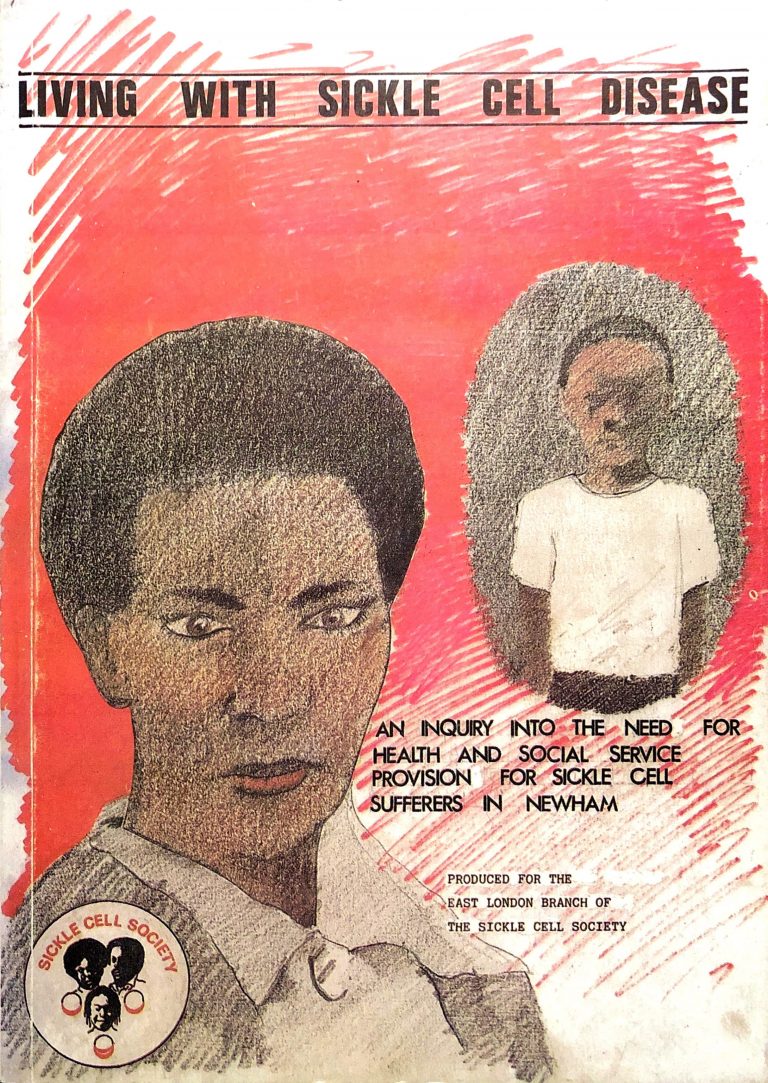
Sickle cell disease is a genetic blood disorder, in which blood cells can become hard and rigid, impeding their passage through veins and leading to life-threatening complications. Poor understanding of sickle cell in the NHS meant that many families had to do their own research on the condition, and learn how to manage it through trial and error.


